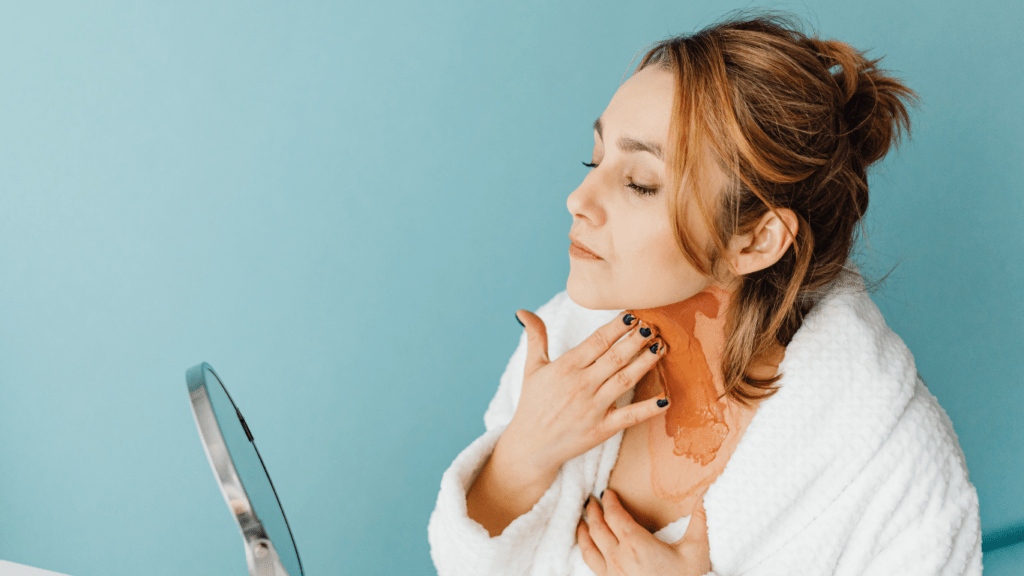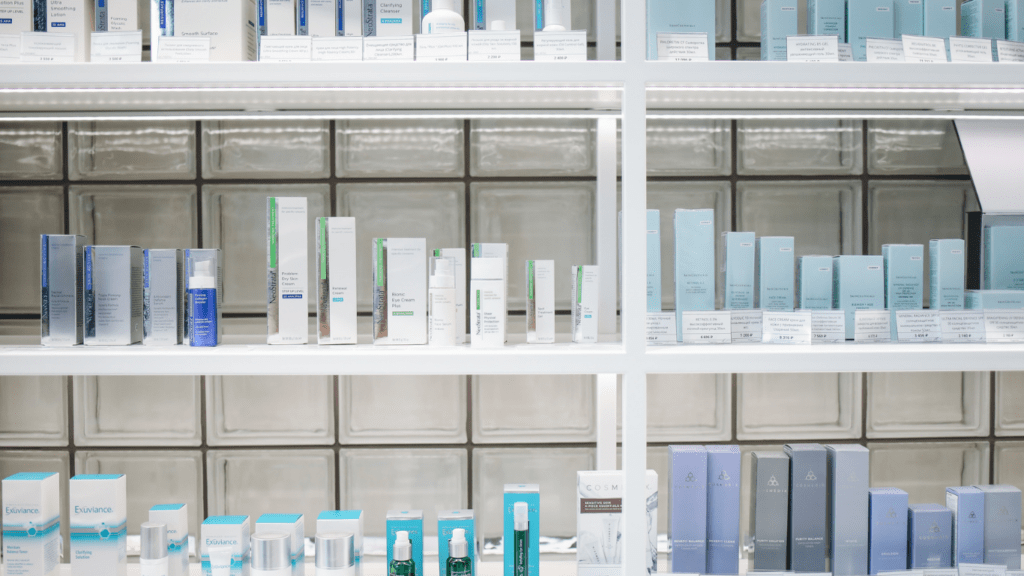The Importance of Layering Skincare Products
Layering skincare products directly affects their effectiveness. Applying products in the correct order ensures optimal absorption.
Enhances Product Absorption
Each skincare product has ingredients designed to target specific skin concerns (e.g., hydration, acne, aging). Proper layering allows each ingredient to penetrate the skin efficiently. For example, lightweight serums penetrate the skin better when applied before heavier creams.
Prevents Ingredient Interference
Some ingredients can neutralize each other when mixed. Layering separates them to avoid diminishing their efficacy. For instance, using benzoyl peroxide and retinol together can reduce their effectiveness. Ensuring they’re applied in the right sequence prevents this issue.
Maximizes Benefits
Proper layering boosts the overall benefits of the skincare routine. Active ingredients work best when they can interact directly with the skin without barriers. For example, applying a vitamin C serum under sunscreen protects the skin while promoting brightness.
Creates a Protective Barrier
Moisturizers and oils form a barrier that locks in active ingredients and hydration. Applying them last in the routine seals in the benefits of previously applied products. This barrier also protects the skin from environmental factors like pollution.
Offers Customization
Layering allows for a tailored approach to skincare. Users can target multiple concerns simultaneously by layering different products. For instance, applying a hydrating serum followed by an anti-aging cream addresses dryness and fine lines at once.
Understanding Your Skin Type
Identifying your skin type is crucial for maximizing the effectiveness of your skincare routine. There are five primary skin types: oily, dry, combination, sensitive, and normal. Each type has specific characteristics and requires tailored products.
- Oily Skin: This type produces excess sebum, leading to shiny, greasy skin, especially in the T-zone. People with oily skin often struggle with enlarged pores, blackheads, and acne.
- Dry Skin: Dry skin lacks sufficient moisture and natural oils, resulting in rough, flaky patches. It can feel tight or appear dull and may be prone to fine lines and irritation.
- Combination Skin: Someone with combination skin experiences both oily and dry areas. Usually, the T-zone is oily, while other parts like the cheeks might be dry or normal.
- Sensitive Skin: This type reacts easily to products, environmental changes, or even stress. Common signs include redness, itching, burning, and dryness. People with sensitive skin need gentle, hypoallergenic products.
- Normal Skin: Normal skin has a balanced oil production and moisture level. It’s smooth, with minimal imperfections and requires a minimal skincare routine to maintain its health.
Create a tailored skincare routine based on your skin type to ensure each product addresses your specific needs effectively. Use lightweight, non-comedogenic products for oily skin; opt for rich, hydrating formulations for dry skin; balance treatments for combination skin, focus on soothing ingredients for sensitive skin, and maintain a simple, balanced routine for normal skin. Identifying and catering to your skin type will enhance the effectiveness of your skincare layering.
Basic Steps in a Skincare Routine

Understanding the essential steps in a skincare routine ensures maximum effectiveness. Each step has a specific role in maintaining balanced, healthy skin.
Cleansing
Cleansing is crucial for removing dirt, oil, and impurities from the skin’s surface. I always start with a gentle cleanser suitable for my skin type. For those with dry skin, cream-based cleansers work best. People with oily skin benefit from gel or foaming cleansers (e.g., salicylic acid-based).
Toning
Toners help restore the skin’s pH balance after cleansing. Using a toner preps the skin for better absorption of subsequent products. I prefer alcohol-free toners to avoid irritation. For sensitive skin, look for hydrating toners with ingredients like rose water or chamomile. Individuals with oily skin often use toners containing witch hazel or AHAs/BHAs.
Moisturizing
Moisturizing locks in hydration and protects the skin barrier. I use a moisturizer with ingredients like hyaluronic acid or glycerin, depending on my skin’s needs. Dry skin benefits from heavier creams, while oily skin does well with lightweight, non-comedogenic moisturizers. For combination skin, applying different moisturizers to specific areas ensures balanced hydration.
How to Layer Skincare Products Properly
Correctly layering skincare products is crucial for enhancing their effectiveness and ensuring optimal absorption.
Serums and Treatments
Serums target specific skin concerns with concentrated active ingredients. Apply serums after cleansing and toning but before heavier creams. For instance, use a hyaluronic acid serum for hydration or a vitamin C serum for brightening. Let the serum absorb for about 1-2 minutes before applying the next product. This ensures that the active ingredients penetrate the skin effectively.
Eye Creams
Eye creams address delicate skin around the eyes, reducing puffiness, dark circles, and fine lines. Apply eye creams after serums but before moisturizers. Dab a small amount using your ring finger, which applies the least pressure, to prevent pulling on the skin. Look for ingredients like peptides for anti-aging or caffeine for puffiness reduction.
Moisturizers and Sunscreen
Moisturizers lock in hydration and provide a protective barrier. Apply moisturizers after eye creams, choosing one suitable for your skin type. For instance, use a gel-based moisturizer for oily skin or a cream-based one for dry skin. In the mornings, follow up with sunscreen to protect from UV damage. Use a broad-spectrum sunscreen with at least SPF 30. Apply it as the final step in the morning routine to ensure any treatment products remain effective.
Common Mistakes to Avoid
Failing to Cleanse Properly
Skipping cleansing compromises the rest of the routine. Residual makeup and dirt clog pores, causing breakouts. Use a gentle cleanser that suits your skin type, and follow with a toner to remove any remaining impurities.
Applying Products in the Wrong Order
Incorrect layering affects absorption and effectiveness. Apply products from thinnest to thickest consistency. Start with serums, follow with eye creams, then moisturizers. End with sunscreen in the morning to block harmful UV rays.
Using Too Much Product
Excess product clogs pores and wastes money. Use a pea-sized amount of serums, a rice grain-sized amount of eye cream, and a nickel-sized amount of moisturizer. This ensures skin absorbs products without lingering residue.
Ignoring Product Compatibility
Combining incompatible ingredients can irritate the skin. For instance, avoid using retinol with alpha hydroxy acids simultaneously. Check product labels and consult a dermatologist to ensure compatibility.
Skipping Patch Tests
Introducing new products without patch testing risks adverse reactions. Apply a small amount of new product on your forearm and wait 24 hours. If there’s no irritation, it’s likely safe to use on your face.
Not Adjusting Routine with Seasons
Skin needs change with seasons. In winter, switch to heavier moisturizers to combat dryness. In summer, opt for lighter products to prevent excess oil and breakouts. Adjust the routine to match the climate.
Over-Exfoliating
Frequent exfoliation damages the skin barrier. Limit exfoliating to 2-3 times a week, using gentle products. This promotes cell turnover without causing irritation.
Neglecting to Use Sunscreen
Failure to apply sunscreen daily leads to premature aging and sun damage. Use broad-spectrum sunscreen with at least SPF 30 every morning, even on cloudy days. Reapply every two hours if exposed to sunlight.
Disregarding Expiry Dates
Using expired products reduces effectiveness and can cause skin issues. Check expiration dates and discard products past their prime. This ensures that the ingredients are active and beneficial.
By avoiding these common mistakes, skincare routines become more efficient and effective, promoting healthier skin.
Tips for Maximum Effectiveness
Cleanse Thoroughly
Cleansing removes dirt, oil, and makeup. Do it twice daily, in the morning and before bed, using a mild cleanser suited to your skin type. I prefer a gentle foaming cleanser for oily skin, while creamy formulas work better for dry skin.
Tone After Cleansing
Toners balance pH levels. Apply toner immediately after cleansing, using a cotton pad or your hands. Swiping it over your face removes residual impurities. I find alcohol-free toners more hydrating and less irritating.
Apply Serums and Treatments
Serums and treatments deliver concentrated ingredients. Use them right after toning. Apply a few drops to your face and neck, gently patting the product into your skin. I like using vitamin C serums in the morning and retinoid-based treatments at night.
Use Eye Cream
Eye creams target delicate under-eye skin. Apply a small amount with your ring finger, avoiding tugging. I put eye cream before heavier moisturizers to ensure the skin absorbs it better.
Moisturize
Moisturizers lock in hydration. Choose a formula based on your skin type: lightweight gel for oily skin and richer creams for dry skin. Apply moisturizer after serums and eye cream. I prefer layering lighter products first to allow deeper absorption.
Seal with Sunscreen
Sunscreen protects against UV damage. Use SPF 30 or higher. Apply generously as the last step of your morning routine. I find daily sunscreen use essential, even on cloudy days, to prevent long-term skin damage.
Adjust According to Season
Seasonal changes affect skin needs. Switch products with the seasons. Utilize hydrating components in winter and lighter, oil-free products in summer. I always tweak my skincare to address specific seasonal concerns like dryness or excess oil.


 Bonnie Brown is an expert in holistic wellness with over a decade of experience in natural health and skincare. She has dedicated her career to helping individuals achieve radiant health through plant-based solutions and mindful self-care practices. Bonnie is passionate about blending ancient traditions with modern wellness techniques, making her insights a valuable resource for anyone on a journey to healthier skin and overall well-being.
Bonnie Brown is an expert in holistic wellness with over a decade of experience in natural health and skincare. She has dedicated her career to helping individuals achieve radiant health through plant-based solutions and mindful self-care practices. Bonnie is passionate about blending ancient traditions with modern wellness techniques, making her insights a valuable resource for anyone on a journey to healthier skin and overall well-being.
